New Red Hat Enterprise Linux for Business Developers is available for free
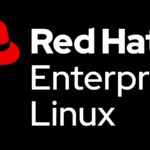
Linux stalwart Red Hat has announced the general availability of Red Hat Enterprise Linux for Business Developers. Designed for enterprise development use, the new platform is free of charge as Red Hat seeks to make things easier and more accessible for business development teams.
The new self-service offering is made available through the Red Hat Developer Program with the aim of simplifying an increasingly complex IT landscape. Red Hat is looking to assist development teams in building, testing and iterating on applications more quickly and on the same platform that underpins production systems across the hybrid cloud at no cost.
Chaos RAT malware strikes Linux and Windows as hackers exploit its flaws

Chaos RAT is back and causing trouble on Linux and Windows systems. This open source remote access tool was once pitched as a legitimate way to manage computers remotely. Now, it is being used to spy on users, steal data, and possibly set the stage for ransomware. But in an ironic twist, attackers are now turning the tables and exploiting Chaos RAT itself.
Originally written in Go and designed for cross platform compatibility, Chaos RAT has evolved from a basic tool into a very dangerous piece of malware. It has been spotted in real world attacks including a recent sample disguised as a Linux network utility. Victims were likely tricked into downloading a fake troubleshooting tool containing the malware.
Linux users, rejoice! CachyOS fixes Nvidia issues and kills buggy browser
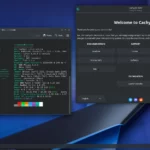
CachyOS is back with its latest May 2025 release, and yes, Nvidia users can finally breathe a sigh of relief. After months of headaches caused by the distro switching to the “open” Nvidia module, older GPUs like the 10xx series were left limping along with buggy Nouveau drivers. That mess is now cleaned up. The ISO now automatically detects your GPU and loads the correct driver.
The changes don’t stop there, folks. If you’re into aesthetics, the boot process just got a fresh coat of paint. There’s a new Plymouth boot animation and GRUB theme that help unify the distro’s visual identity. It’s a small touch, but it makes a difference.
Ditch Windows 11 and try Alpine Linux 3.22 with GNOME 48 and Plasma 6.3
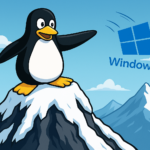
Alpine Linux 3.22 is finally here (download), and if you’re tired of bloated operating systems like Windows 11, this release might be the breath of fresh air you’ve been waiting for. While Alpine is still a niche distribution, it’s slowly becoming a viable option for power users who want speed, control, and simplicity.
Despite being known as a lightweight distro often used in containers and servers, Alpine 3.22 brings some serious desktop upgrades. It now includes GNOME 48, KDE Plasma 6.3, and LXQt 2.2. Even the XFCE desktop got some love, with updated packages like xfce4-panel 4.20.4, thunar 4.20.3, and more. It’s clear Alpine is not just for the command-line crowd anymore.
TUXEDO Stellaris 16 Gen7 is a Linux laptop with desktop power and optional water cooling
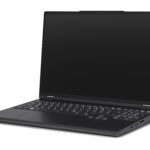
If you’ve been hunting for a laptop that offers hardcore power without ditching portability, the new Stellaris 16 Gen7 from TUXEDO Computers might be your dream machine. This thing is built like a tank, runs Linux out of the box, and somehow manages to blend high-end desktop performance into a notebook form factor.
At the center of it all is Intel’s Core Ultra 9 275HX processor. It has 24 cores and can hit 5.4GHz, which means it handles everything from gaming and compiling code to editing massive videos without flinching. Even better, it uses way less power than its predecessor. You can fine-tune how it behaves using TUXEDO’s own Control Center, letting you decide how loud or fast it should run depending on what you’re doing.
Can’t afford RHEL? AlmaLinux 10 is enterprise Linux for cheapskates

AlmaLinux 10.0, nicknamed “Purple Lion,” is officially available here, and it is a clear choice for anyone who wants RHEL 10 compatibility without spending a cent. For those unwilling (cheapskates) or unable (broke) to pay Red Hat’s subscription fees, this release feels like a gift.
Built using the new Kitten upstream, AlmaLinux 10.0 stays fully compatible with RHEL 10 while making some much-needed changes for real users. It supports hardware Red Hat left behind, restores features RHEL dropped, and keeps everything free and open.
ARM is the future and Armbian 25.5 is the Linux-based OS ready for it

Armbian 25.5 is here, and it looks like a quality operating system release for anyone messing around with ARM-based boards. The Linux distribution brings better hardware support, smarter configuration tools, and more.
This update adds support for more single-board computers, including the TI SK-AM69, Banana Pi M2+, BeagleBone AI-64, BeaglePlay, and PocketBeagle2. That covers both newer devices and older ones that still have life left in them. Armbian’s not leaving legacy users behind, which is refreshing.
Linux 6.15 brings new hardware support and bcachefs improvements

Linus Torvalds has officially released version 6.15 of the Linux kernel. While this update doesn’t include anything flashy or headline-grabbing, it continues the steady evolution of the most important open source kernel in the world.
As usual, driver updates make up the bulk of changes. Linux 6.15 brings better support for modern hardware, including fixes for newer Lenovo and HP laptops, updates to Allwinner and Rockchip boards, and expanded controller support in the xpad driver.
Arch Linux-based SteamOS 3.7.8 update brings Plasma 6, better battery controls, and Legion Go S support

Valve has officially pushed SteamOS 3.7.8 to the Stable channel, and it’s a hefty one. After months of development in the beta lane, the refreshed version of the Arch-based operating system is finally ready for primetime. This release brings a number of notable enhancements to Steam Deck users and expands support for a growing family of AMD-powered handheld gaming PCs, including Lenovo’s awesome new Legion Go S.
One of the more welcomed changes is the jump to the Linux 6.11 kernel and Mesa graphics stack update, helping to squeeze out more performance and compatibility with newer hardware. But perhaps more impactful for everyday users is the switch to KDE Plasma 6.2.5 in desktop mode, marking a major visual and functional upgrade over the older Plasma 5 environment. This should make the Steam Deck’s desktop experience feel far more modern and snappy.
Red Hat Enterprise Linux 10 arrives with AI assistant and post-quantum security

Red Hat has just taken the wraps off Red Hat Enterprise Linux 10, and honestly, there’s a lot for the Linux community to get excited about. You see, this new version brings some real substance, pushing enterprise Linux in directions that truly matter for today’s IT world.
First and foremost, there's Lightspeed -- the new AI-powered assistant baked right into RHEL 10. Instead of spending all day searching for answers or poking through documentation, admins can simply ask questions directly from the command line and get real-time help. This is the kind of smart, hands-on support that can actually make life easier, especially for those just getting started or managing sprawling environments.
Microsoft open-sources WSL to give developers control over Linux on Windows
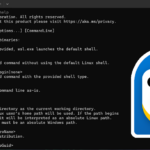
Well, it finally happened, folks. Microsoft has open-sourced the Windows Subsystem for Linux (WSL), giving developers full access to its code on GitHub! Yes, after nearly a decade of closed development and repeated requests from the community, the company has handed over the keys -- inviting coders to inspect, improve, and contribute to the very core of how Linux runs on Windows.
This isn’t some half-baked gesture, either. Microsoft has released the core WSL package (the components that power WSL 2) under an open source license. This includes command-line tools like wsl.exe, background services, init processes, networking daemons, and the Plan9-based file sharing system. You can now build WSL from source, fork it, or pitch in directly on GitHub.
Toss Windows 11 in the trash and give Debian Linux 12.11 a try
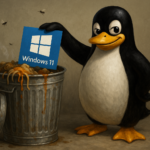
Debian just got a fresh update with version 12.11, the eleventh point release for “bookworm.” You might be thinking, “How many point releases can one operating system have?” But unlike Windows 11, which can feel like it’s constantly changing things nobody asked for, Debian just quietly gets the job done, one steady release at a time.
This update isn’t a brand-new version, so you don’t need to toss your old installer or start over. Nope, folks, just run your regular updates, and you’ll get the latest security patches and bug fixes. Only new installations will actually require the creation of new media. For that you can grab an ISO here.
Your Linux apps could be leaking data -- oniux is built to stop it

A new tool called oniux has landed for Linux users who take their privacy very seriously. If you want to make sure your apps never leak data outside of the Tor network, oniux could be your new favorite command-line utility.
Oniux takes any Linux app and drops it into its own isolated network environment. From there, the app can only connect to the internet using Tor. This isn’t a trick with proxy settings or patched libraries. It uses actual features built into the Linux kernel, giving it a level of protection that’s hard to beat.
NordVPN finally gets a proper GUI on Linux
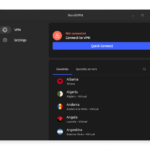
For years, NordVPN made Linux users live in the terminal. Sure, the command-line interface technically worked, but let’s not pretend it was ideal for everyone. Meanwhile, competitors like Surfshark and ExpressVPN had already given their Linux users full graphical interfaces. Now, NordVPN has finally caught up by launching its very own GUI for Linux.
So, what exactly does this mean? Well, instead of typing in commands, users can now click their way through connection options, settings, and even theme preferences like light or dark mode. This will arguably make using the service on Linux much easier.
Nobara 42 ditches Firefox for Brave while becoming the friendliest Fedora-based Linux distribution ever
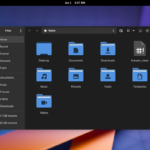
The latest version of Nobara has officially landed, and it’s packed with many thoughtful changes that continue to make it one of the most user-friendly Linux experiences around. With version 42, the Fedora-based distribution receives GNOME 48, KDE 6.3.4, Nvidia driver version 575.144, and Linux kernel 6.14.6.
One of the most noticeable changes, however, is the web browser switch. Firefox is surprisingly out, and Brave is now the default. That might sound controversial at first, but there’s actually solid reasoning behind it.
© 1998-2025 BetaNews, Inc. All Rights Reserved. About Us - Privacy Policy - Cookie Policy - Sitemap.